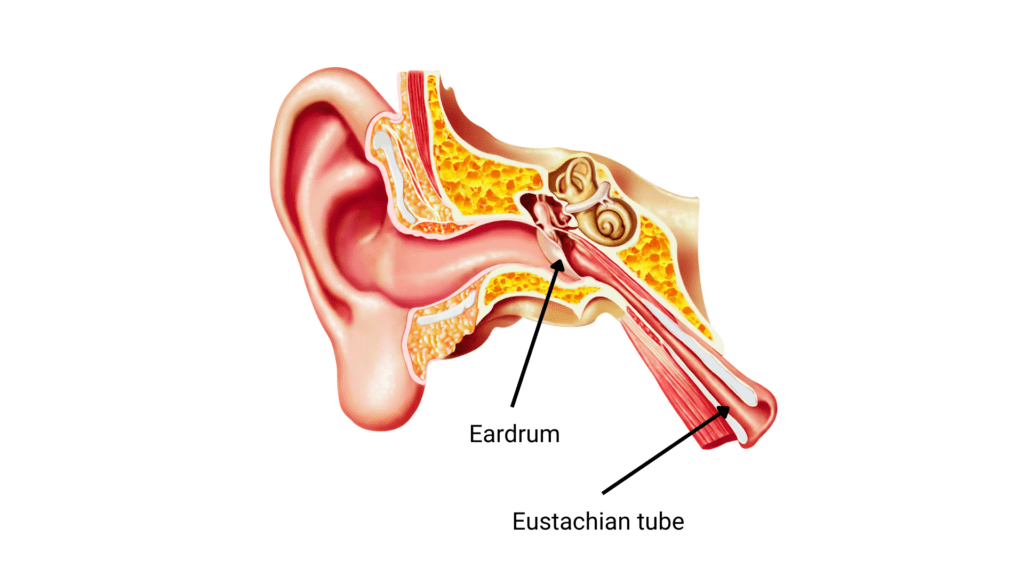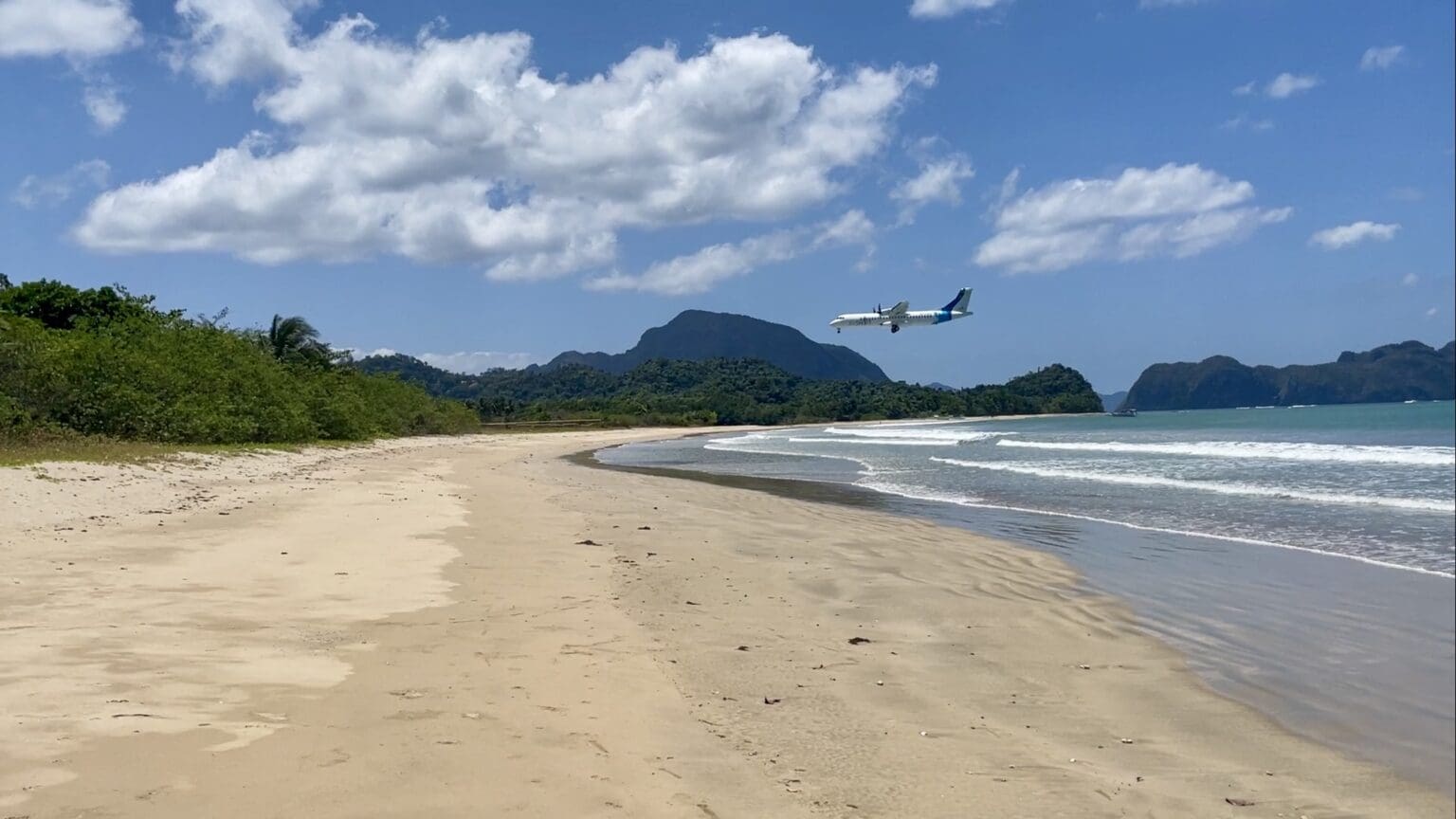Air travel is the fastest and safest way from point A to point B. We are a lucky generation to hop on a plane and be on the other side of the planet in under 24 hours.
Although flying for some people can be as natural as taking a bus, cruising the sky 30 000 – 42 000 feet high (10 – 12km) at 560 mph (900 km/h) comes with challenges.
These tips and advice for long flights will help you stay as healthy and fit as possible. Using scientific resources to address the most common health issues related to plane travel.
According to a meta-analysis with 1.5 billion passengers, there were 18.2 medical emergency events per million passengers, and the death rate was 1 in 5 million passengers.
In another study, it was estimated that 1 in 14,000 – 40,000 passengers have flight-related medical issues. That’s 350 per day worldwide.
Let’s lower the number, shall we?
In This Article
This post includes affiliate links. If you choose to purchase through these links, I may receive a commission, helping me continue creating valuable content for you. This comes at no additional cost to you.
Choose the right seat for you
Too many times, I was arguing about who would be sitting by the window. It’s an evergreen of every group trip, but let’s dig deeper into which seat is the best.
Window seats have these advantages: the view, being able to rest your head against a wall, and not being disturbed by other passengers leaving their seats.
However, when no annoying person disturbs your personal space every 60 minutes on their way to the bathroom, it means you are the annoying person.

One of the main health risks on long-haul flights is venous thromboembolism (blood clotting in your veins). Among other risk factors, 75% of events have been linked to immobilization. And guess which seats had the greatest frequency of this condition. The non-aisle seats.
People sitting in aisle seats tend to move more. It’s because they can get up whenever they want without waking up travelers next to them. Psychologically, they tend to drink and stretch more.
This is why I prefer to sit in the aisle as well, especially when I travel solo.
Pro tip:
If you’ve been on a less crowded flight before, you probably know what the ultimate plane seat is. To have all three or four seats for yourself.
This is a blessing, and you can either get lucky and get that, or you can politely ask either while dropping the baggage or at the airline counter during layover.
On the way to our honeymoon, we got seats in a different row because of an online check-in bug. They were so kind at the airline desk and gave us two seats next to each other with the middle seat empty.
Stretch and move frequently
Stretch whenever, wherever possible. At the airport, especially right before boarding the plane. Do you have a layover? Walk for at least 15 minutes in the last hour.

In the aircraft move your toes and your ankles frequently. While seated, you can roll your neck and your shoulders.
You should also stand up and move occasionally. Waiting while the bathroom is occupied is ideal for leg stretches.
This helps release muscle tension, keeps the blood flowing, and reduces bloating. It keeps you energized and fresh and, most importantly, lowers the chance of thromboembolism significantly.
Drink lots of water
Hydration is your strongest and easiest weapon to use. Low humidity in the cabin, stress, and other factors increase the amount of water your body needs.
Things like expensive airport water bottles, constant hustle before the takeoff, and the urge to use the airport and aircraft bathroom as little as possible decrease the water intake.
Drink water, herbal tea, or sports drinks intentionally more often than usual. You can monitor your hydration level by the color of your urine. Aim for lightly colored.
Keep an empty bottle and use a drinking water fountain to fill it up if you want to save money. Never drink tap water at the airport without using a filtration bottle. You can always ask the flight attendant for more water.

Limit sweet drinks because of the dehydrating effect of sugar, and also sparkling drinks on a plane to avoid bloating as the gases expand in low-pressure conditions.
If you’re sensitive to dry environments (10 – 20% humidity in the cabin), you can hydrate your skin with moisturizer or use eye drops if needed. Chew gum or suck on some herbal pastil for sore throat.
Avoid alcohol and caffeine
There is something magical at the moment when you’re finally seated on the last plane to your destination, all the visas, check-in, and document control are done, you ascend to the right altitude, and the flight attendant asks if you want a beer or wine. You certainly have the urge to treat yourself with a free beverage.
The fact is alcohol dehydrates, worsens your sleep, weakens your immune system, irritates your digestive organs, and so on. Of course, it highly depends on the amount.
In my experience, telling a patient something is forbidden is highly ineffective. They ignore the advice that is this definitive. Let’s say limit the alcohol intake as much as possible to stay fresh and avoid medical problems while flying.

Caffeine dehydrates and makes you urinate more often. Avoid coffee a few hours before flight and at least 8 hours before going to sleep. Having a coffee before landing is okay, although it might taste like burned socks. And that brings us to…
Wear compression socks
Sitting in one place for hours is highly unnatural, and our bodies are not adapted to it. I know, you might do that every day working a 9 – 5 office job (also unnatural). But on a normal day, you change positions, stand up, and walk quite frequently.
The longest flight on your itinerary might be 10+ hours long. During that time, your ankles can become swollen, resulting in an uncomfortable, heavy feeling. More importantly, your blood stagnates in the veins and can result in deep vein thrombosis.

Besides hydrating and moving, wearing compression socks is a perfect way to prevent these adverse events.
The socks use graduated pressure on your feet, ankles, and calves. This mechanism imitates the muscle pump effect present while walking to circulate the blood in veins. Aim for ankle pressure of 17-30 mm Hg (pressure unit).

Dress comfortably
Let’s face it: if you’re a celebrity or a public person, you’re probably flying in first class or private.
There’s no reason (and no excuse) to wear a suit or uncomfortable dress on a long flight. If you’re an influencer, just take the photo and change in the cabin bathroom.
Plenty of clothes are comfortable and nice at the same time. Choose breathable materials. Wear comfy shoes or slippers. Remove your shoes on the plane (change your socks before you do).
If you have a layover or a long travel to the airport, change your clothes to stay fresh and clean.
Bring layers. Even if it’s summer, airports and planes can get very chilly. Don’t stress your body by being cold.
Wear glasses instead of contact lenses. Dry air and A/C will irritate your eyes. If you choose to wear contact lenses, use eye drops frequently. Make sure your hands are super clean before removing them.
Use hand sanitizer
Microbes are everywhere. They’re in the air, on surfaces, on your body, in your body, and so on.
Your immune system will take care of most of them, and the vast majority are not even harmful. However, public places pose a risk of transmitting bacterial and (mostly) viral infections.
Airports are a crossroads of a great amount of diverse people with diverse microbiomes. You don’t want to stress about this and won’t do much about it on the spot except for hand hygiene.
Simple habits like washing your hands frequently and using hand sanitizer will save you so much trouble.

Sanitize your hands with hand disinfection after using the bathroom, after touching suspicious objects, and always before eating.
Make sure to keep the disinfection handy. You can use wet towels to clean the tray on the board, which is one of the dirtiest places.
Sleep at the right time
If you’re able to fall asleep on a plane, that’s great. Go for it. But make sure you’re getting your sleep at the night time of your destination if you’re crossing time zones.
If you slept 6 or 8 hours on a 12-hour flight, you can feel great and rested. That feeling will end soon if you land at 11 pm. Going to sleep after that is almost impossible.
In the next few days, you’re going to regret that. Read more about how to manage jet lag here.
Use an eye mask, earplugs, or noise-canceling earphones, and a travel pillow to get comfy.

Choose your meal options properly
Factors like stress, new environments, and poor food choices can worsen your digestion.
On the day of your flight, try to eat light meals to avoid this. Bring snacks like nuts or beef jerky on board.
Up in the sky, fast changes in the cabin pressure lead to the expansion of gas. That includes gas inside your bowels. In combination with a lack of body movement, it can lead to abdominal pain, and you can feel bloated.
To avoid this, limit sweet, sparkling drinks and foods that undergo fermentation. Things like broccoli, cabbage, cauliflower, dairy products, etc.
Try not to eat in the nighttime of your destination because of circadian rhythms.

Prevent middle-ear pain and trauma
According to Boyle-Mariotte’s law, when the surrounding pressure decreases, the gas volume increases.
The air pressure outside of the aircraft is very low (thin air), but inside the cabin, the pressure is artificially generated. Still, it gets only to the air pressure that represents the altitude of around 8000 feet (2400m) above the sea level.
The gas in body cavities expands by 30% compared to sea level. This can be observed in the middle ear.
During ascending, the gas expands, pushing the air against the eardrum. While descending, the pressure difference pulls the eardrum inwards.
This results in an unpleasant or even painful feeling. Eventually, the pressure in the middle ear and in the cabin is evened by the Eustachian tube (the connection between the middle ear and nasal cavity).
The exact percentage differed in studies, but one paper showed that „10% of adults and 22% of children might have damage to the eardrum after a flight, although perforation is rare.“

The symptoms and light damage to the eardrum resolve spontaneously. You can still help your Eustachian tube balance the pressure.
- Chew gum, suck a candy, or swallow frequently
- Yawn a few times
- Push the soft part of your palate up with your tongue
- Hold your nose and blow
- Move your ears up and down if you can
All those movements use muscles attached to the area where the tube is, trying to help the process.
Children and people with stuffed noses and sinuses suffer the most. In these cases, you can use antihistaminic medication or topical decongestant. There are some gadgets for children too.
Drugs containing pseudoephedrine (Sudafed) should be the most effective, but be careful as they are banned in some countries (Japan, for example).

Follow these tips to fly like a pro and stay fresh and healthy.
You can learn more about some of these topics on our blog.
Now, you can finally sit back, relax, and enjoy your flight.
Resources
https://www.qantas.com/us/en/travel-info/travel-advice/your-health-inflight.html#inflight-workout
Borges do Nascimento, I. J., Jerončić, A., Arantes, A. J. R., Brady, W. J., Guimarães, N. S., Antunes, N. S., Carim Junior, G., & Marcolino, M. S. (2021). The global incidence of in-flight medical emergencies: A systematic review and meta-analysis of approximately 1.5 billion airline passengers. The American journal of emergency medicine, 48, 156–164. https://doi.org/10.1016/j.ajem.2021.04.010
Silverman, D., & Gendreau, M. (2009). Medical issues associated with commercial flights. Lancet (London, England), 373(9680), 2067–2077. https://doi.org/10.1016/S0140-6736(09)60209-9
Naouri, D., Lapostolle, F., Rondet, C., Ganansia, O., Pateron, D., & Yordanov, Y. (2016). Prevention of Medical Events During Air Travel: A Narrative Review. The American journal of medicine, 129(9), 1000.e1–1000.e10006. https://doi.org/10.1016/j.amjmed.2016.05.013
Lapostolle, F., Corège, D., Sordelet, D., Grave, M., Lapandry, C., Vivien, B., Wipf, P., & Adnet, F. (2010). Y a t-il un médecin dans l’avion? [Is there a doctor on board?]. Presse medicale (Paris, France : 1983), 39(6), 626–631. https://doi.org/10.1016/j.lpm.2009.10.011
Basu A. (2007). Middle ear pain and trauma during air travel. BMJ clinical evidence, 2007, 0501.
Stangerup, S. E., Tjernström, O., Klokker, M., Harcourt, J., & Stokholm, J. (1998). Point prevalence of barotitis in children and adults after flight, and effect of autoinflation. Aviation, space, and environmental medicine, 69(1), 45–49.
Belcaro G, Cesarone MR, Shah SSG, et al. Prevention of Edema, Flight Microangiopathy and Venous Thrombosis in Long Flights with Elastic Stockings. A Randomized Trial: The LONFLIT 4 Concorde Edema-SSL Study. Angiology. 2002;53(6):635-645. doi:10.1177/000331970205300603
Disclaimer:
The information provided in this blog post is for general informational and educational purposes only and is not a substitute for professional medical advice. Always consult your physician or other qualified healthcare provider with any health problem. The use or reliance on any information provided in this blog post is solely at your own risk.










